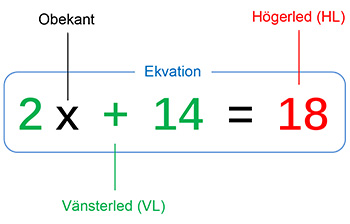Skillnad mellan versioner av "3.3 Ekvationer+"
Taifun (Diskussion | bidrag) m (Taifun flyttade sidan 3.4 Lathund till Ekvationer till 3.3 Lathund till Ekvationer utan att lämna en omdirigering) |
Taifun (Diskussion | bidrag) m |
||
| Rad 2: | Rad 2: | ||
{| border="0" cellspacing="0" cellpadding="0" height="30" width="100%" | {| border="0" cellspacing="0" cellpadding="0" height="30" width="100%" | ||
| style="border-bottom:1px solid #797979" width="5px" | | | style="border-bottom:1px solid #797979" width="5px" | | ||
| − | {{Not selected tab|[[3. | + | {{Not selected tab|[[3.3 Ekvationer|Genomgång Ekvationer]]}} |
| − | {{Not selected tab|[[3. | + | {{Not selected tab|[[3.3 Quiz till Ekvationer|Quiz]]}} |
| − | {{Not selected tab|[[3. | + | {{Not selected tab|[[3.3 Övningar till Ekvationer|Övningar]]}} |
| − | {{Selected tab|[[3. | + | {{Selected tab|[[3.3 Lathund till Ekvationer|Lathund]]}} |
| style="border-bottom:1px solid #797979" width="100%"| | | style="border-bottom:1px solid #797979" width="100%"| | ||
|} | |} | ||
Versionen från 18 juni 2017 kl. 14.03
| Genomgång Ekvationer | Quiz | Övningar | Lathund |
Vad är en ekvation?
En ekvation är en likhet mellan två uttryck,
har alltid formen VL = HL och innehåller
endast EN variabel, kallad obekant, se
exemplet ovan.
Ekvationens lösning: \( \quad\; \)
Kontroll: Sätt in lösningen i ekvationen.
VL \( \, = \, 2 \, \cdot \, {\color{Red} 2} \, + \, 14 \, = \, 4 \, + \, 14 \, = \, 18 \)
HL \( \, = \, 18 \)
VL \( \; = \; \) HL \( \qquad \Longrightarrow \qquad \) OK
Dvs lösningen \( \, x = {\color{Red} 2} \, \) är korrekt.
Kontroll kallas ibland även för prövning.
Övertäckningsmetoden
Exemplet ovan:
\( 2 \, x \;\; + \; 14 \; = \; 18 \quad {\color{Red} {\rm Täck\;över\;}} 2 \, x \)
\( \;\, {\color{Red} ?} \;\;\; + \; 14 \; = \; 18 \)
\( \;\, {\color{Red} 4} \;\;\; + \; 14 \; = \; 18 \)
\( \;\, \Downarrow \)
\( \, 2 \, \cdot \; x \;\; = \;\, {\color{Red} 4} \qquad\quad {\color{Red} {\rm Täck\;över\;}} x \)
\( \, 2 \, \cdot \; \)\( \, 2 \, \cdot \; {\color{Red} ?} \;\; = \;\; 4 \)
\( \, 2 \, \cdot \; {\color{Red} 2} \;\; = \;\; 4 \)
\( \quad\;\;\; \Downarrow \)
Allmän metod
Exemplet ovan:
- \[\begin{array}{rclcl} 2\,x \, + \, 14 & = & 18 & & \\ 2\,x \, + \, 14 \, {\color{Red} {- \, 14}} & = & 18 \, {\color{Red} {- \, 14}} & & \\ 2 \cdot x \, & = & 4 & & \\ \displaystyle \frac{2 \cdot x}{{\color{Red} {2}}} & = & \displaystyle \frac{4}{{\color{Red} {2}}} & & \\ x \, & = & 2 & & \end{array}\]
Copyright © 2010-2017 Math Online Sweden AB. All Rights Reserved.
